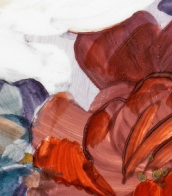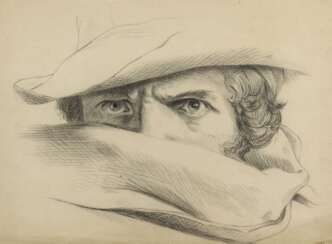roslin

Alexander Roslin was a distinguished Swedish portrait painter, celebrated for his refined depictions of European aristocracy, often highlighting his subjects' luxurious garments with great precision. Born in Malmö on July 15, 1718, Roslin moved to Paris in 1752 after developing his artistic skills in Sweden and traveling through Europe. His stay in Paris marked the peak of his career, where he became a prominent artist noted for his ability to capture the subtle intricacies of satin and skin, earning the admiration of high society.
Throughout his career, Roslin painted notable figures such as Empress Catherine II of Russia and members of the French aristocracy. His works, such as "The Lady with the Veil" (1768), showcase his skill in portraying delicate complexions and rich textiles, attributes that made his paintings highly sought after. This painting, along with others like "King Gustav III of Sweden" (1777), are celebrated for their artistic finesse and are held in prestigious collections, indicating Roslin's lasting legacy in the art world.
For collectors and enthusiasts of classical portraiture, Roslin's work offers a glimpse into the elegance of 18th-century aristocratic life, capturing both the opulence of the era and the personal character of his subjects. To stay updated on exhibitions and sales of Alexander Roslin's works, sign up for our newsletter. This subscription will keep you informed about new acquisitions and notable auction events featuring Roslin's art, ensuring you never miss an opportunity to appreciate or acquire his exquisite portraits.


Elger Esser is a German landscape photographer, living in Düsseldorf. "He is primarily associated with large-format images of European lowlands with his characteristic low horizon lines, pale luminous colours and vast skies".
Esser's work is held in many public collections such as the Rijksmuseum in Amsterdam and the Solomon R. Guggenheim Museum, Metropolitan Museum of Art and Museum of Modern Art in New York. He has won the Rheinischer Kunstpreis and the Oskar Schlemmer Prize.




Anne Vallayer-Coster was a renowned French artist, celebrated for her exceptional still-life paintings that captivated 18th-century art enthusiasts, including the French Queen Marie Antoinette. Born into an artistic family in 1744, Vallayer-Coster's talent was evident early on, leading to her unanimous election into the prestigious Académie Royale at just 26 years old. Her works, characterized by their vibrant color, meticulous detail, and textural precision, often depicted bowls of fruit, game, shells, and flowers, showcasing the opulence of French aristocracy before the Revolution.
Vallayer-Coster's career was notable not only for her artistic achievements but also for her ability to navigate the male-dominated art world of her time. Despite the societal constraints on women artists, she gained the patronage of influential figures like Marie Antoinette and was one of the few women admitted to the Royal Academy of Painting and Sculpture. Her work received critical acclaim at the Salon, where she exhibited regularly from 1771 until 1817, and her still-lifes were praised for their sensuality, illusionistic perfection, and the rich, indulgent luxury they portrayed.
One of Vallayer-Coster's most ambitious works, Still Life with Flowers in an Alabaster Vase and Fruit (1783), exemplifies her unparalleled skill in capturing the soft textures of flowers and their harmonious arrangement. This masterpiece was hailed as such at the Salon of 1783 and is considered by Vallayer-Coster herself as her finest painting. Lost for nearly two centuries, it was recently rediscovered in an almost pristine state and is now part of the National Gallery of Art's collection, highlighting Vallayer-Coster's significant contributions to European art history.
Throughout her career, Vallayer-Coster produced more than 120 still lifes, always with a distinctive brilliance in color, earning her a place among the elite artists of her time. Despite facing challenges during the French Revolution due to her close association with the monarchy, she continued to exhibit her work and contribute to the art world until her death in 1818.
For collectors and experts in art and antiques, Anne Vallayer-Coster's legacy is a testament to her skill, resilience, and the impact of her work on the history of art. To stay updated on new product sales and auction events related to Anne Vallayer-Coster, sign up for updates that focus solely on this exceptional artist's contributions to the art world.


Rembrandt Harmenszoon van Rijn, a Dutch Baroque painter and printmaker, was born on July 15, 1606, in Leiden, Netherlands, and died on October 4, 1669, in Amsterdam. He is celebrated as one of the greatest storytellers in art history, acclaimed for his adept portrayal of human emotions and dramatic narratives. Rembrandt's extensive oeuvre includes portraits, self-portraits, landscapes, genre scenes, allegorical, historical, and biblical themes, as well as animal studies. His artistry shined during the Dutch Golden Age, a period marked by cultural and scientific achievements in the Netherlands.
Rembrandt's education in art began around the age of 10 when he left the Latin School in Leiden to train as an artist. He apprenticed with artists like Jacob van Swanenburg and Pieter Lastman, mastering various aspects of painting. He opened his own studio in Leiden around 1624 or 1625, sharing it with his colleague Jan Lievens. By 1631, he had moved to Amsterdam, where he achieved significant success and trained many important Dutch painters.
Among Rembrandt's notable works are "The Anatomy Lesson of Dr. Nicolaes Tulp" (1632), "The Night Watch" (1642), and "The Syndics of the Amsterdam Drapers’ Guild" (1662). He was also renowned for his self-portraits, creating around 80 over his lifetime, more than any other artist until the 20th century. These self-portraits were not just artistic endeavors but also experiments with facial expressions and lighting effects. Additionally, Rembrandt was a master etcher, transforming etching from a reproductive technique into an art form.
Rembrandt's painting style is characterized by its dramatic use of light and shadow, known as chiaroscuro. His ability to depict materials realistically was unparalleled; his portrayal of metals and fabrics was so lifelike that they appeared to glow and be tangible. He was also known for his impasto technique, applying paint thickly to the canvas, adding a three-dimensional quality to his works.
Despite his artistic prowess, Rembrandt faced financial difficulties and personal tragedies throughout his life. He declared bankruptcy in 1656, a downfall attributed partly to his extensive collection of art objects and curiosities. His masterpieces, however, continued to garner appreciation and influence generations of artists that followed.
For collectors and experts in art and antiques, Rembrandt's works represent a pinnacle of artistic achievement in the Dutch Golden Age. His mastery in portraying the human condition and his innovative techniques in painting and etching make his works highly prized and influential in the art world.
To stay updated on new product sales and auction events related to Rembrandt van Rijn, sign up for our updates. This subscription service is dedicated exclusively to news and events concerning works related to this unparalleled master of the Dutch Golden Age.


Alexander Roslin was a distinguished Swedish portrait painter, celebrated for his refined depictions of European aristocracy, often highlighting his subjects' luxurious garments with great precision. Born in Malmö on July 15, 1718, Roslin moved to Paris in 1752 after developing his artistic skills in Sweden and traveling through Europe. His stay in Paris marked the peak of his career, where he became a prominent artist noted for his ability to capture the subtle intricacies of satin and skin, earning the admiration of high society.
Throughout his career, Roslin painted notable figures such as Empress Catherine II of Russia and members of the French aristocracy. His works, such as "The Lady with the Veil" (1768), showcase his skill in portraying delicate complexions and rich textiles, attributes that made his paintings highly sought after. This painting, along with others like "King Gustav III of Sweden" (1777), are celebrated for their artistic finesse and are held in prestigious collections, indicating Roslin's lasting legacy in the art world.
For collectors and enthusiasts of classical portraiture, Roslin's work offers a glimpse into the elegance of 18th-century aristocratic life, capturing both the opulence of the era and the personal character of his subjects. To stay updated on exhibitions and sales of Alexander Roslin's works, sign up for our newsletter. This subscription will keep you informed about new acquisitions and notable auction events featuring Roslin's art, ensuring you never miss an opportunity to appreciate or acquire his exquisite portraits.










































